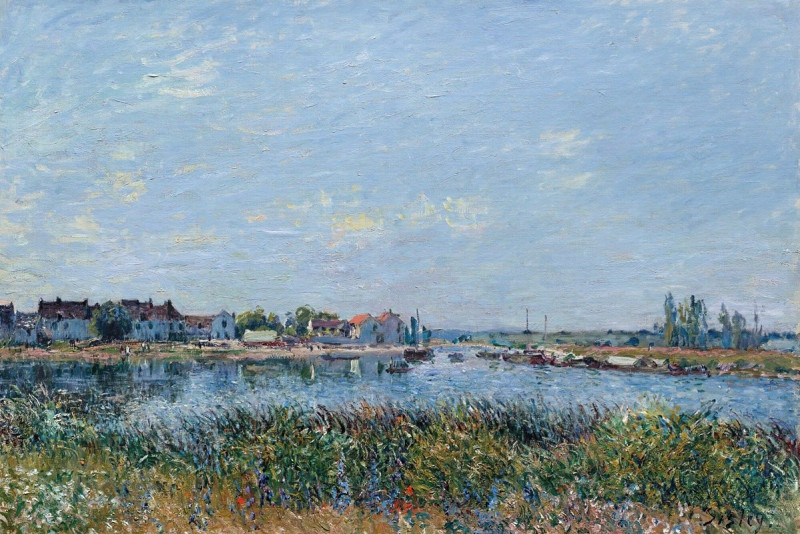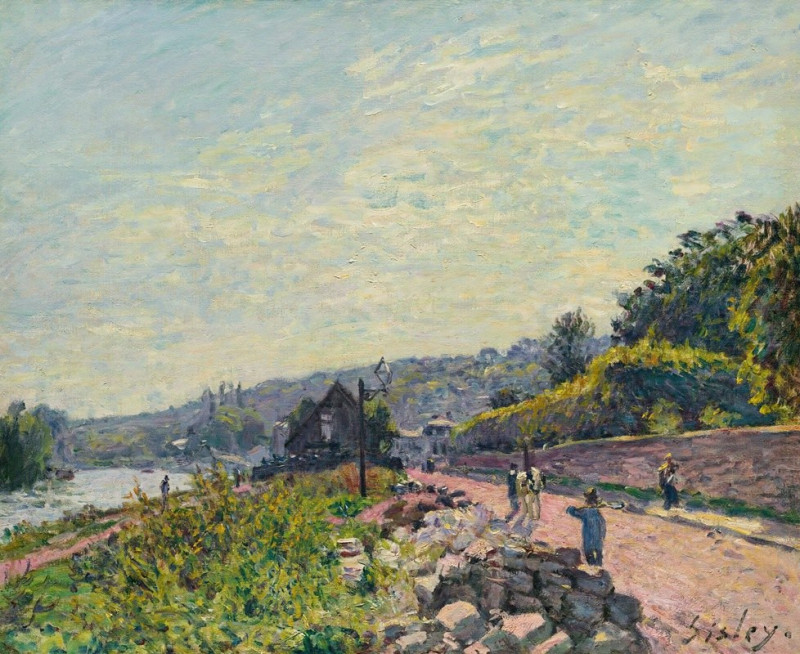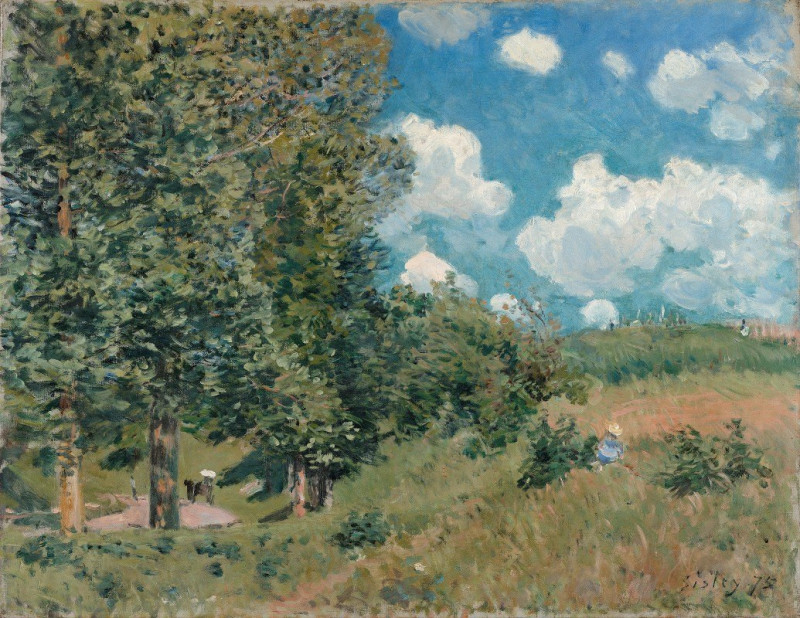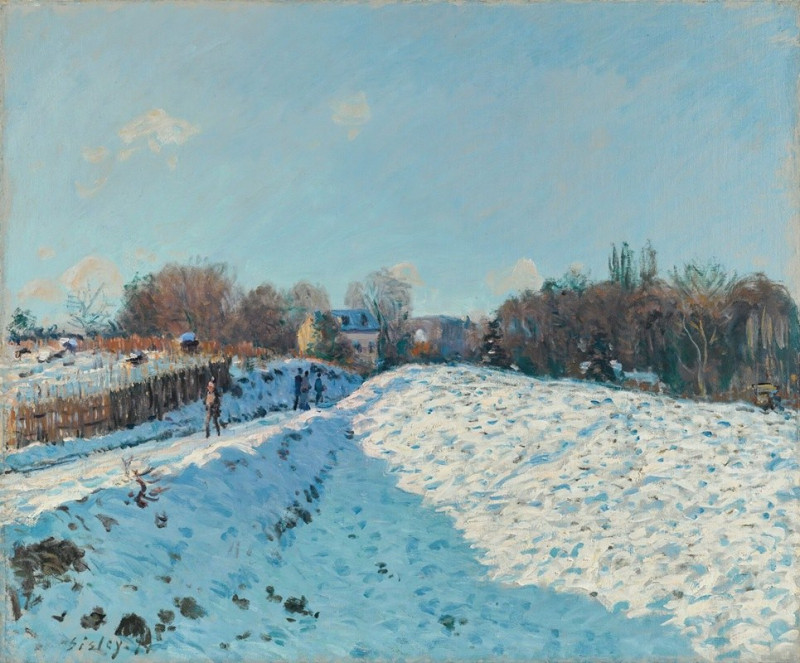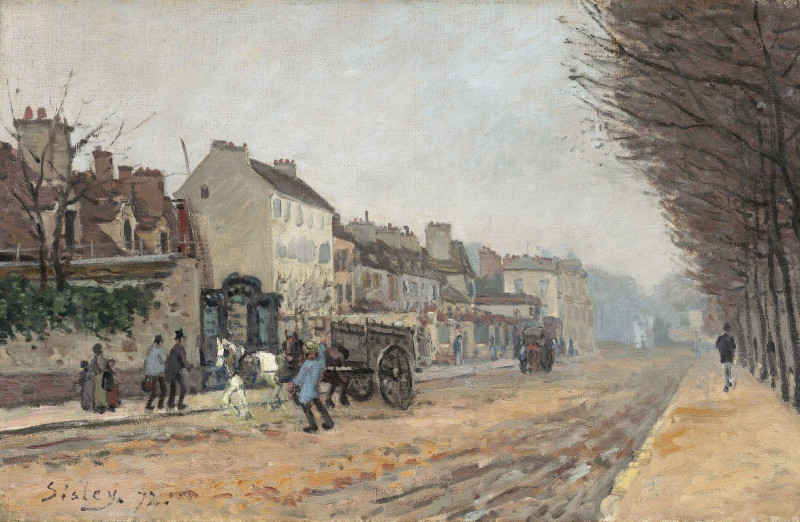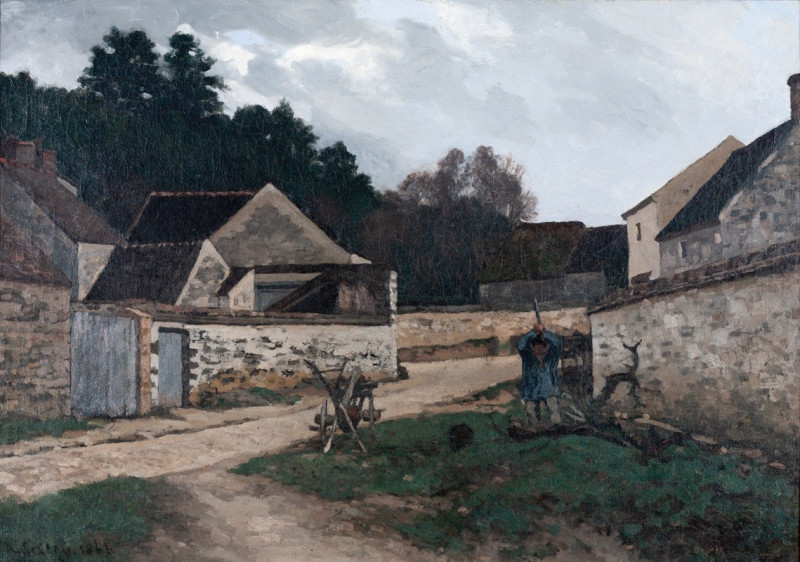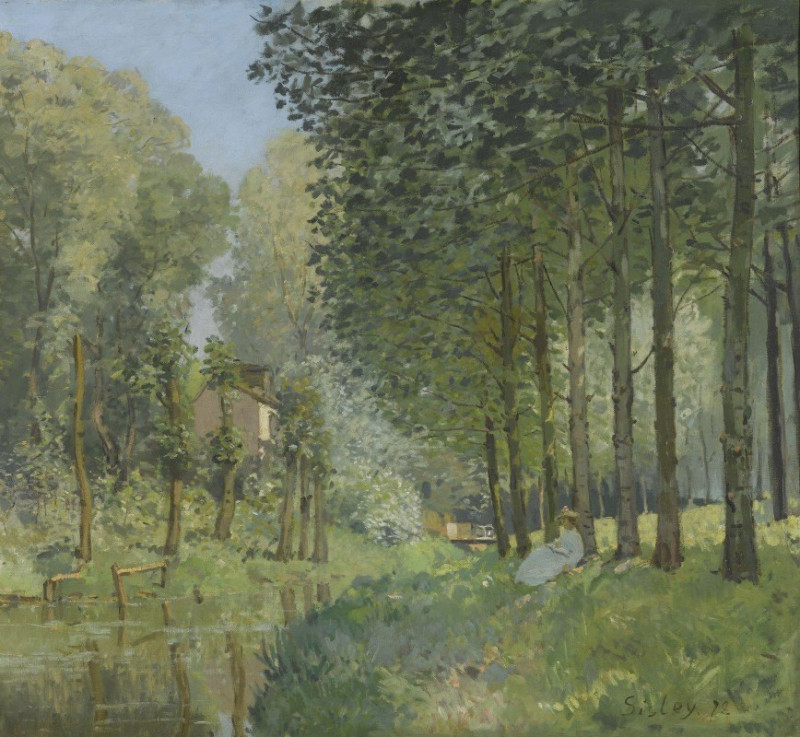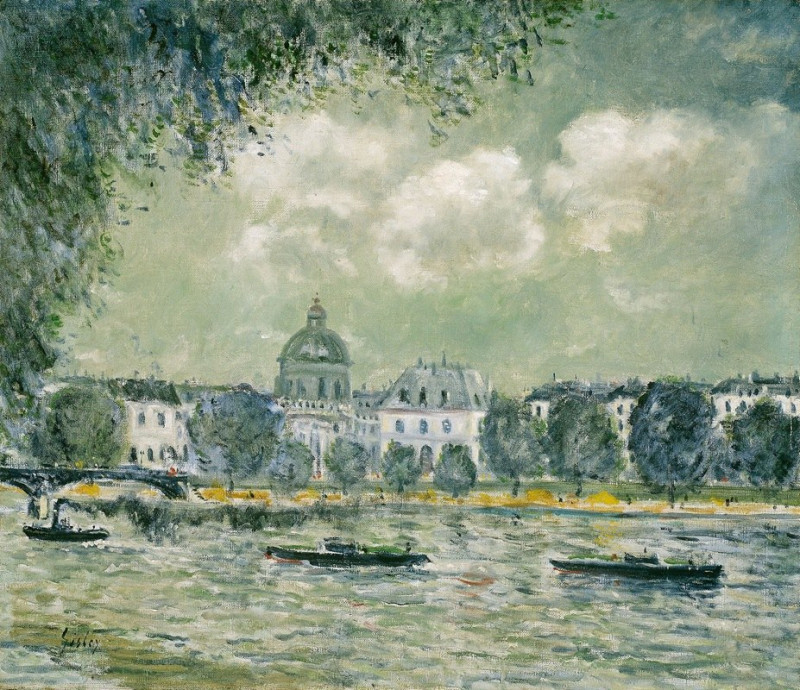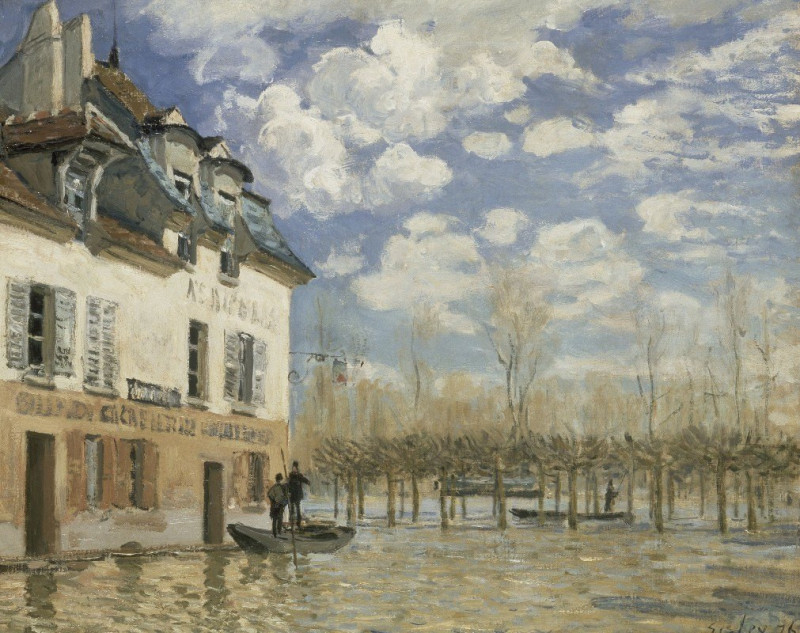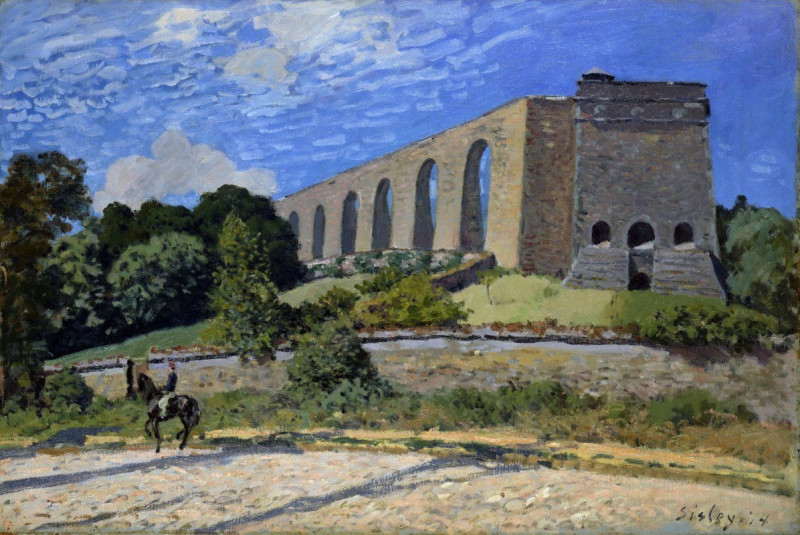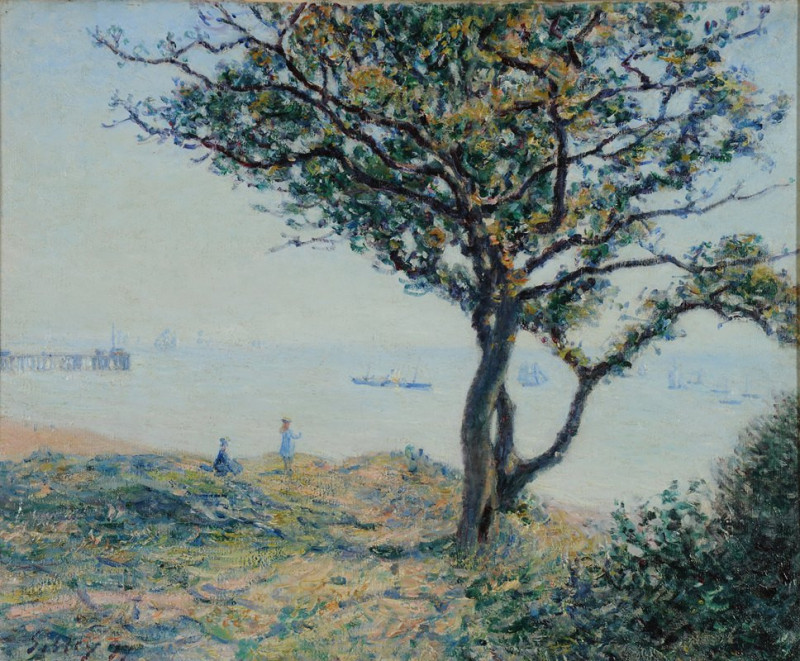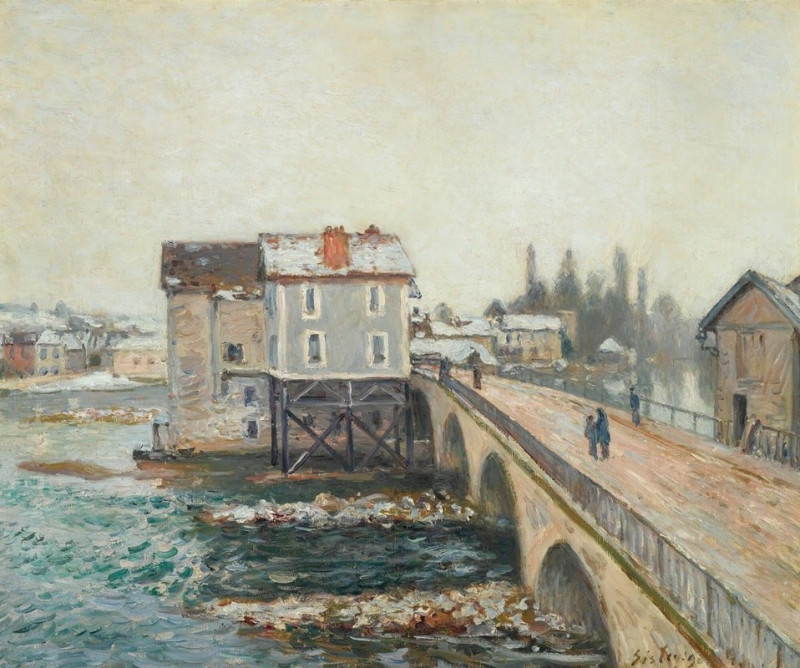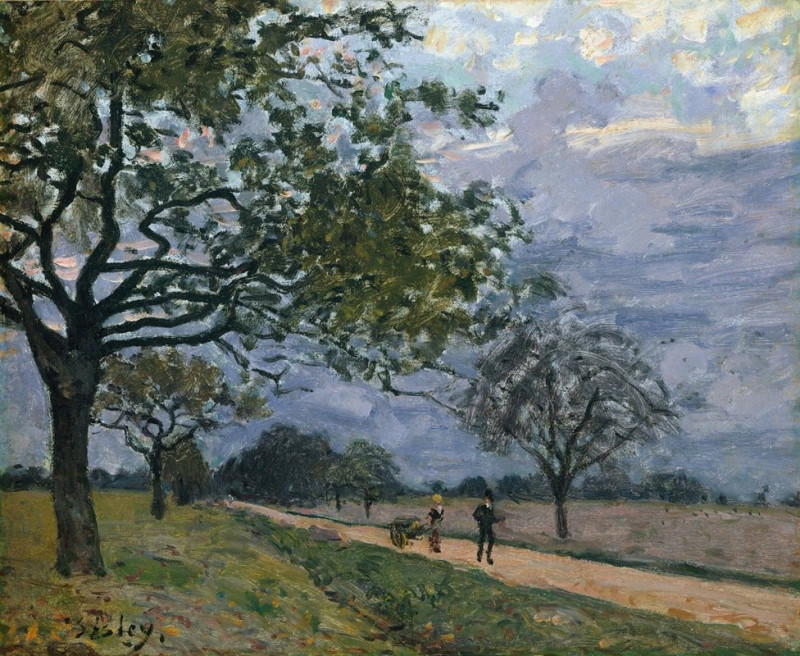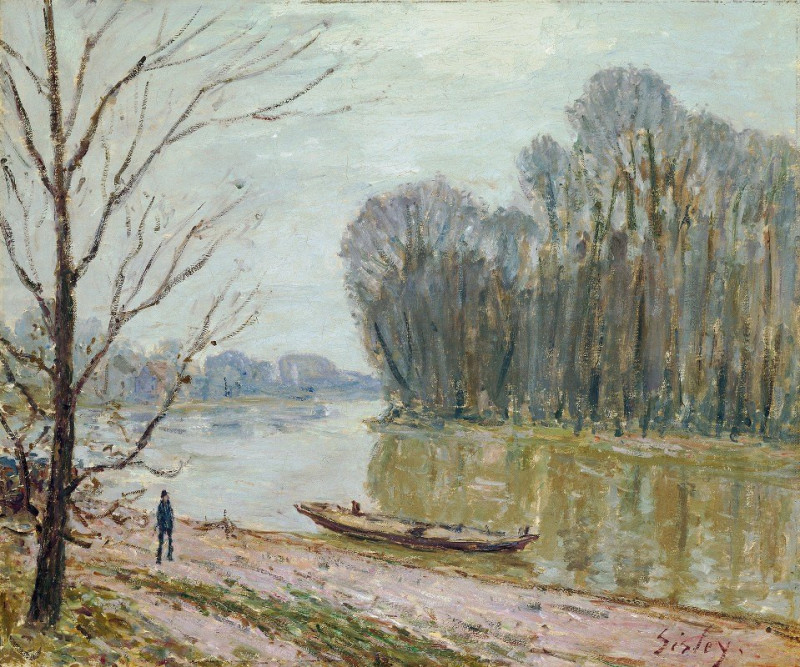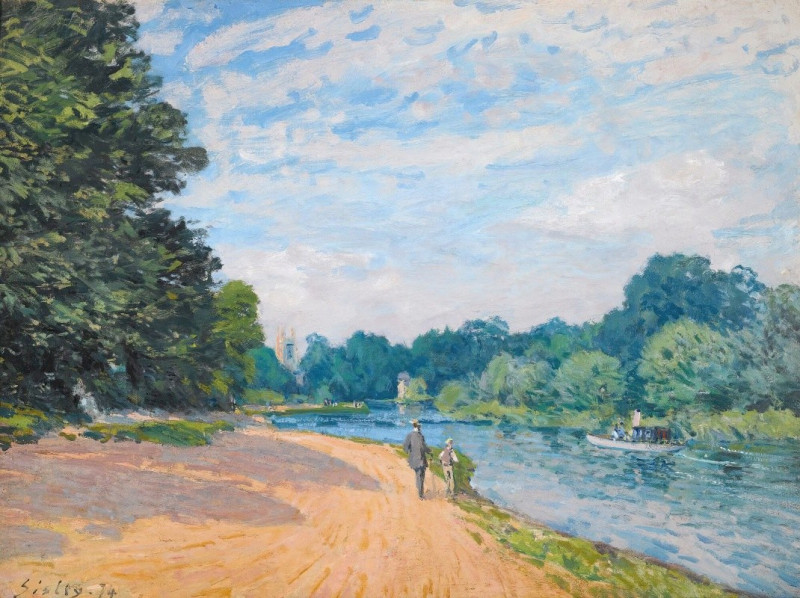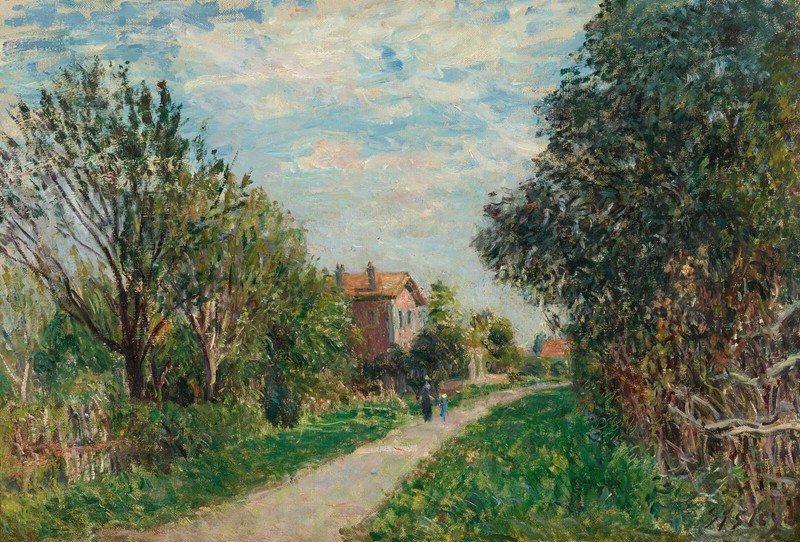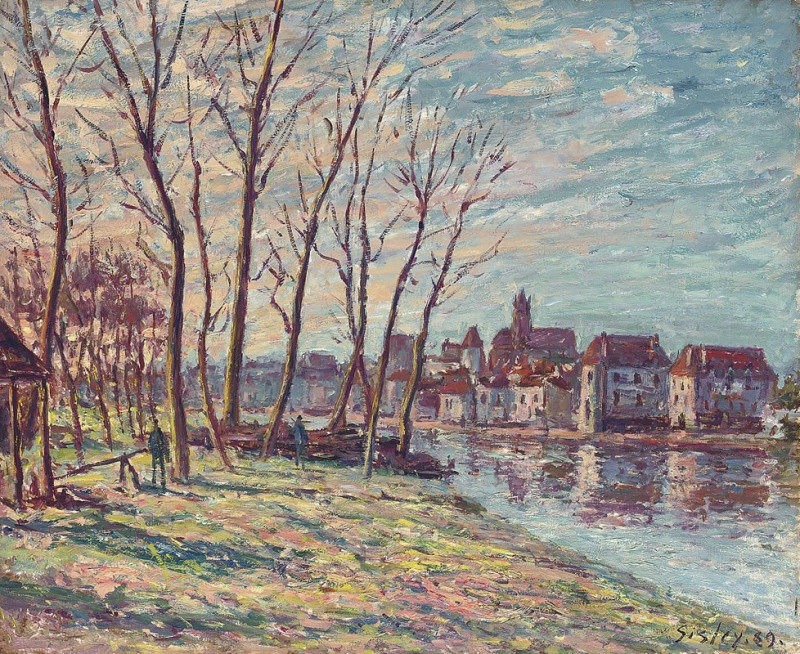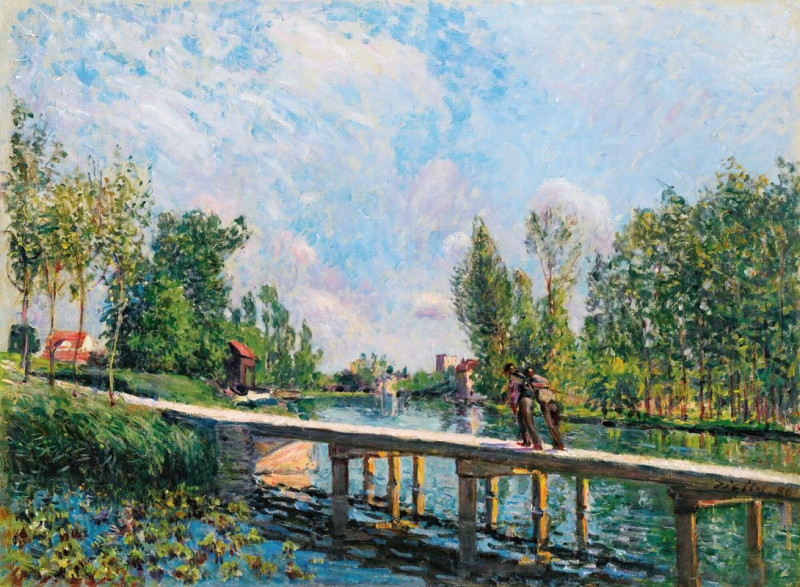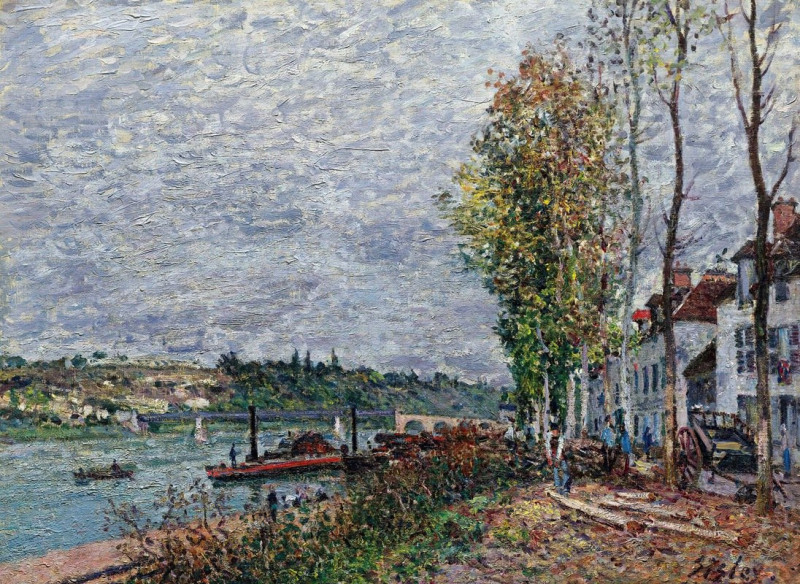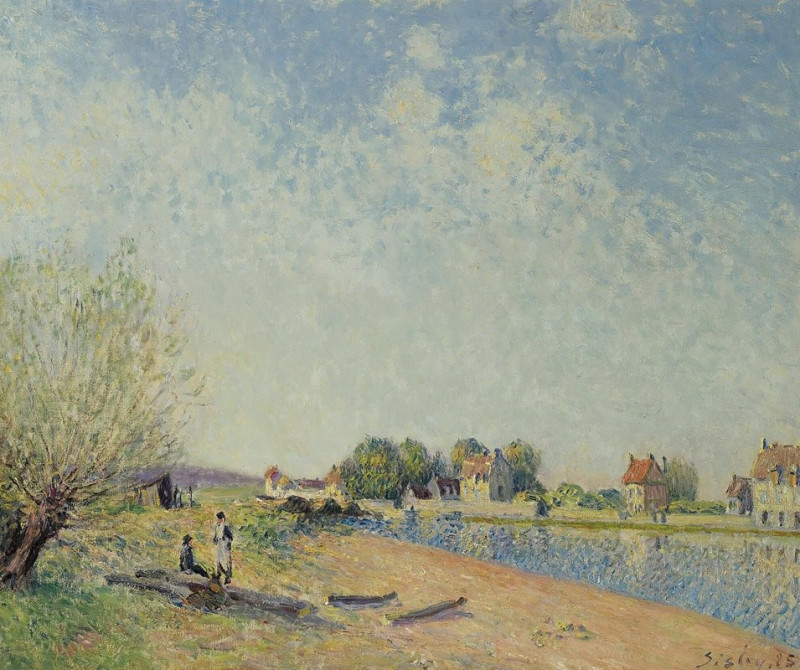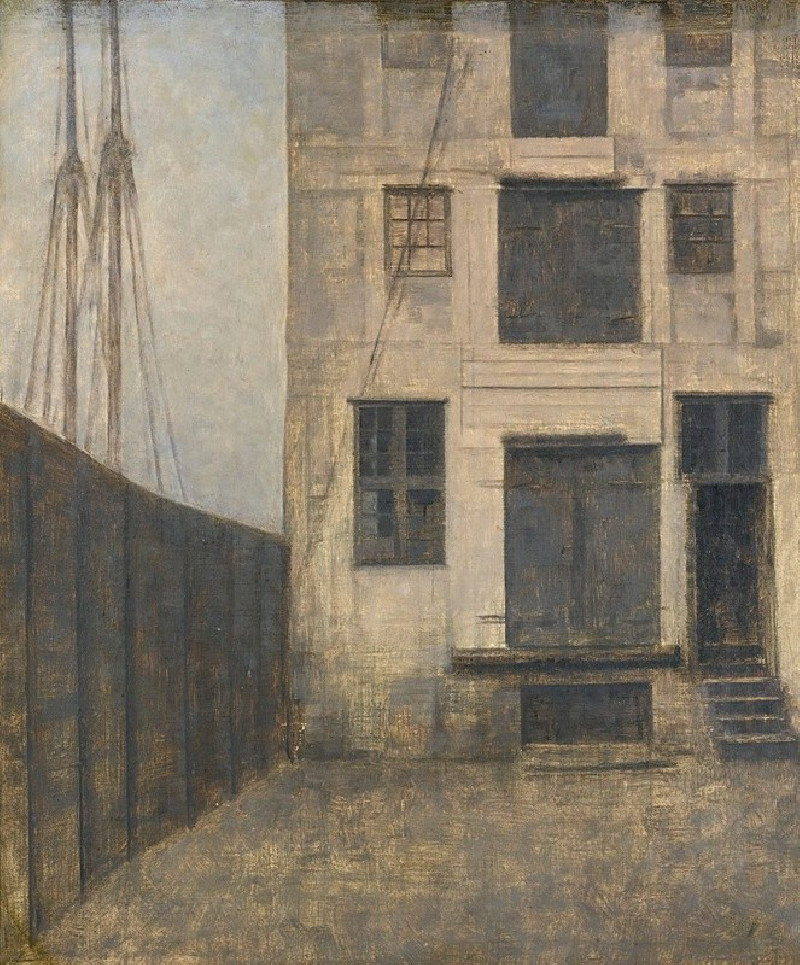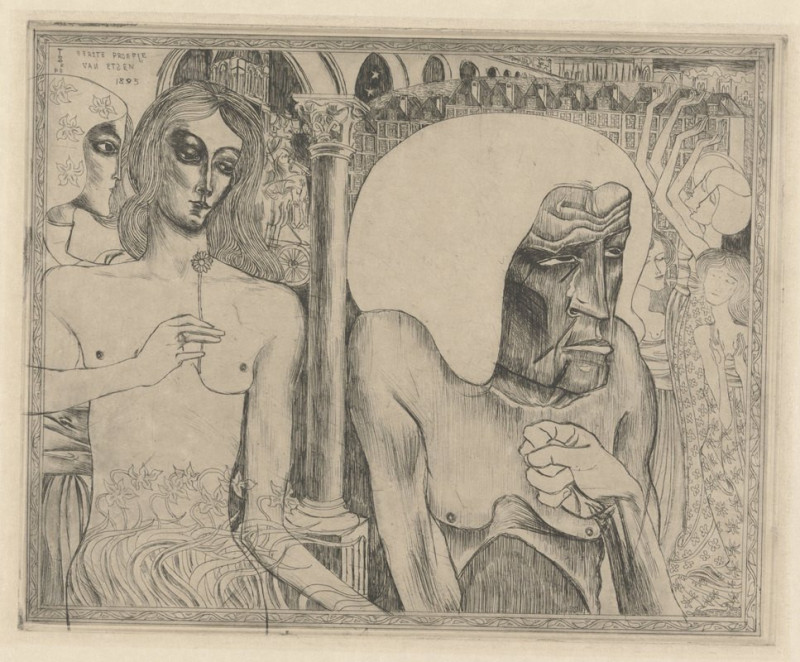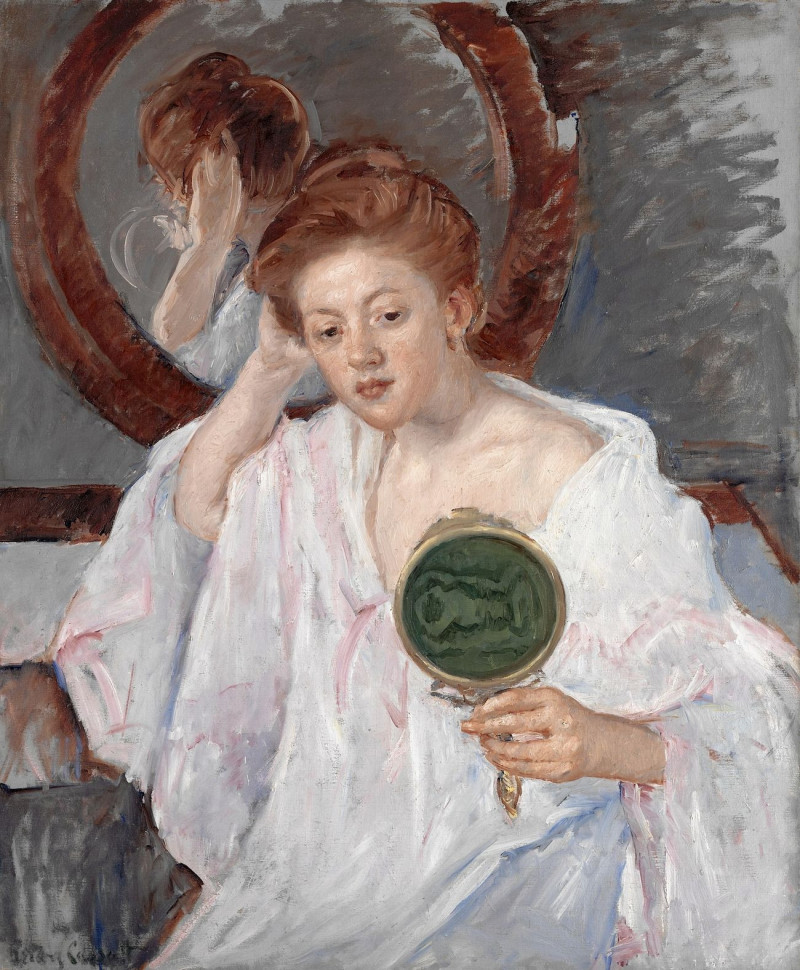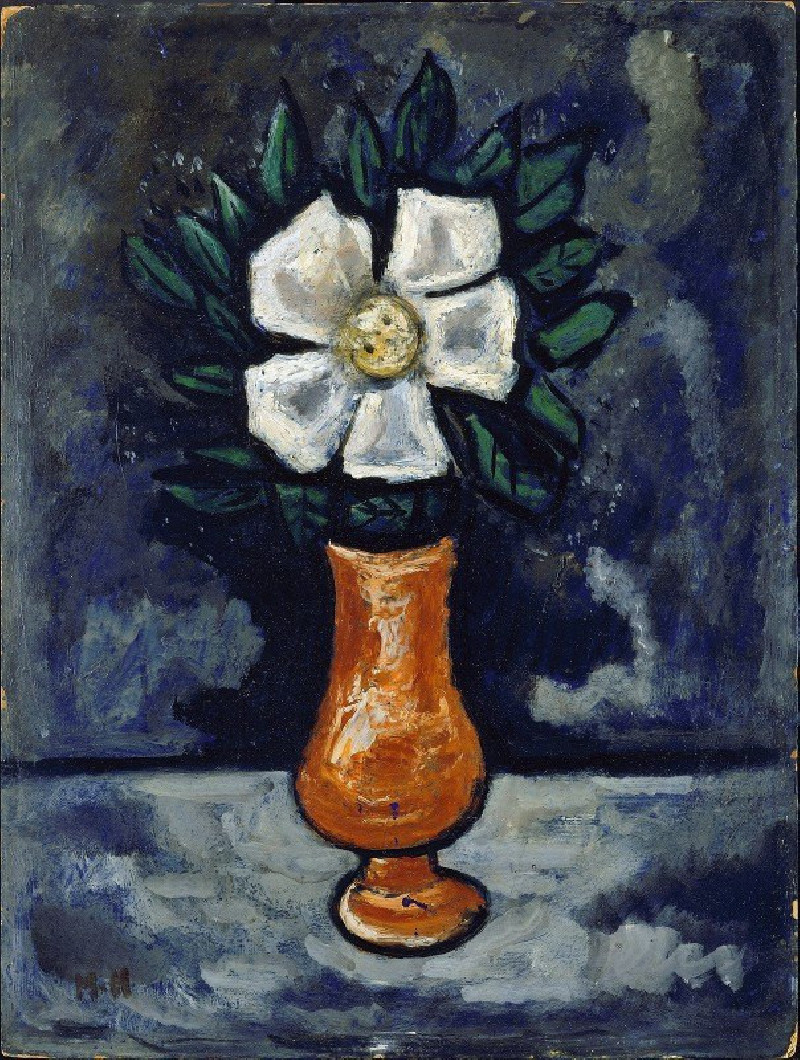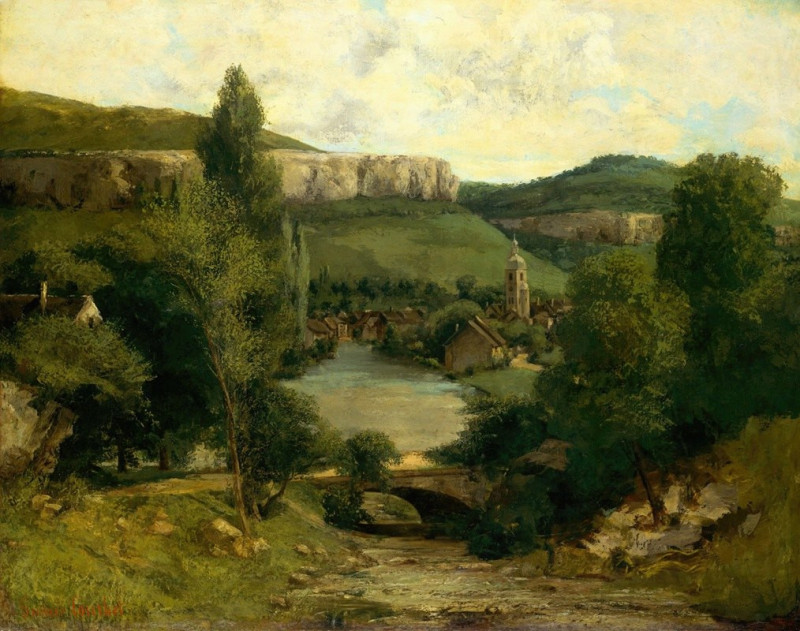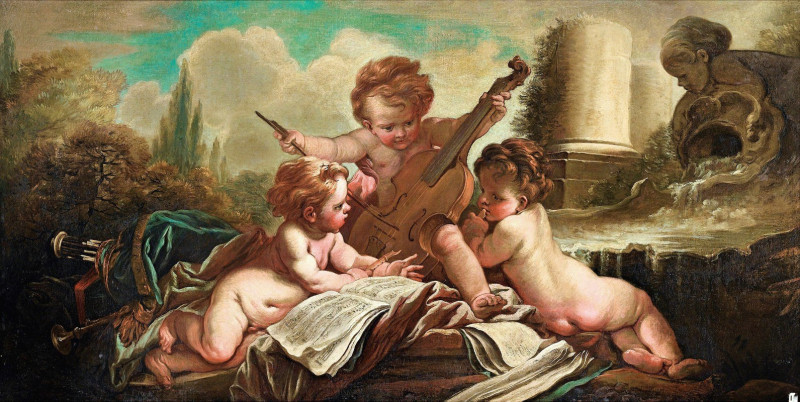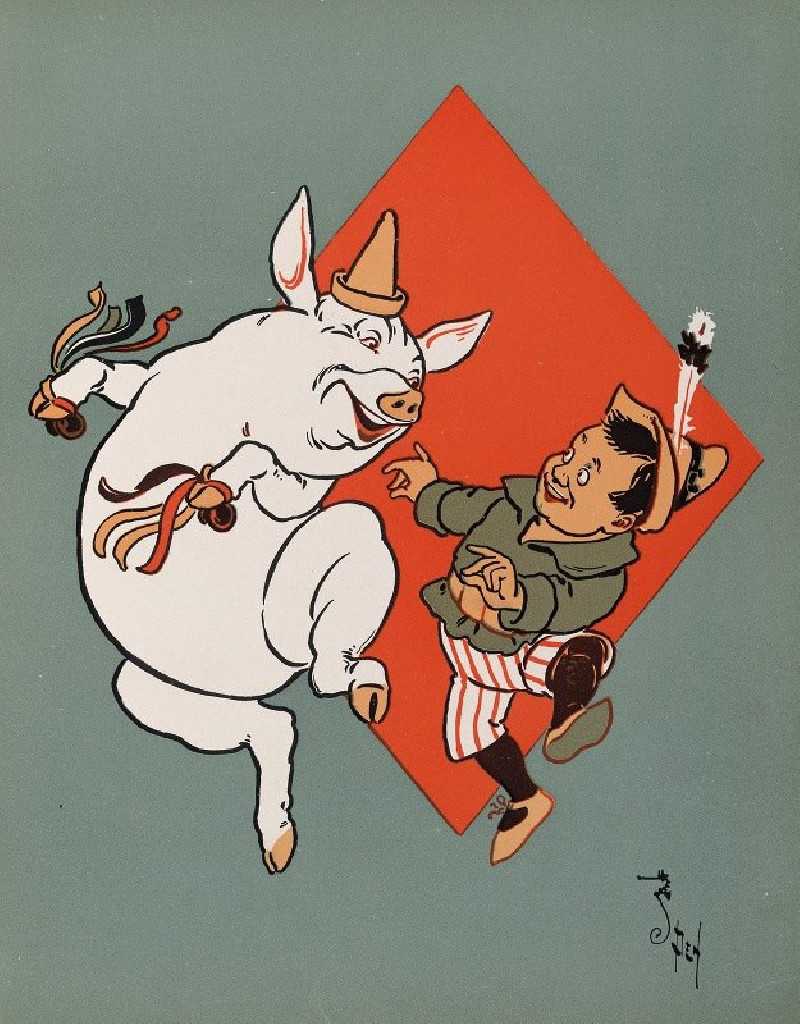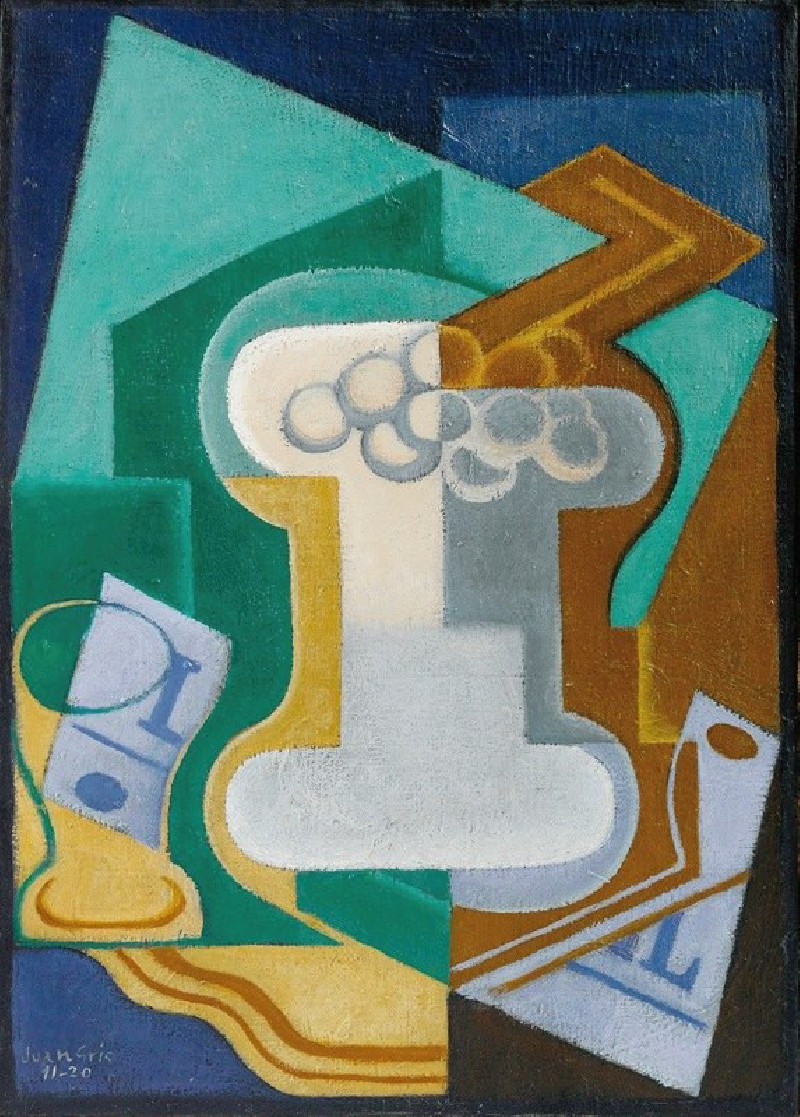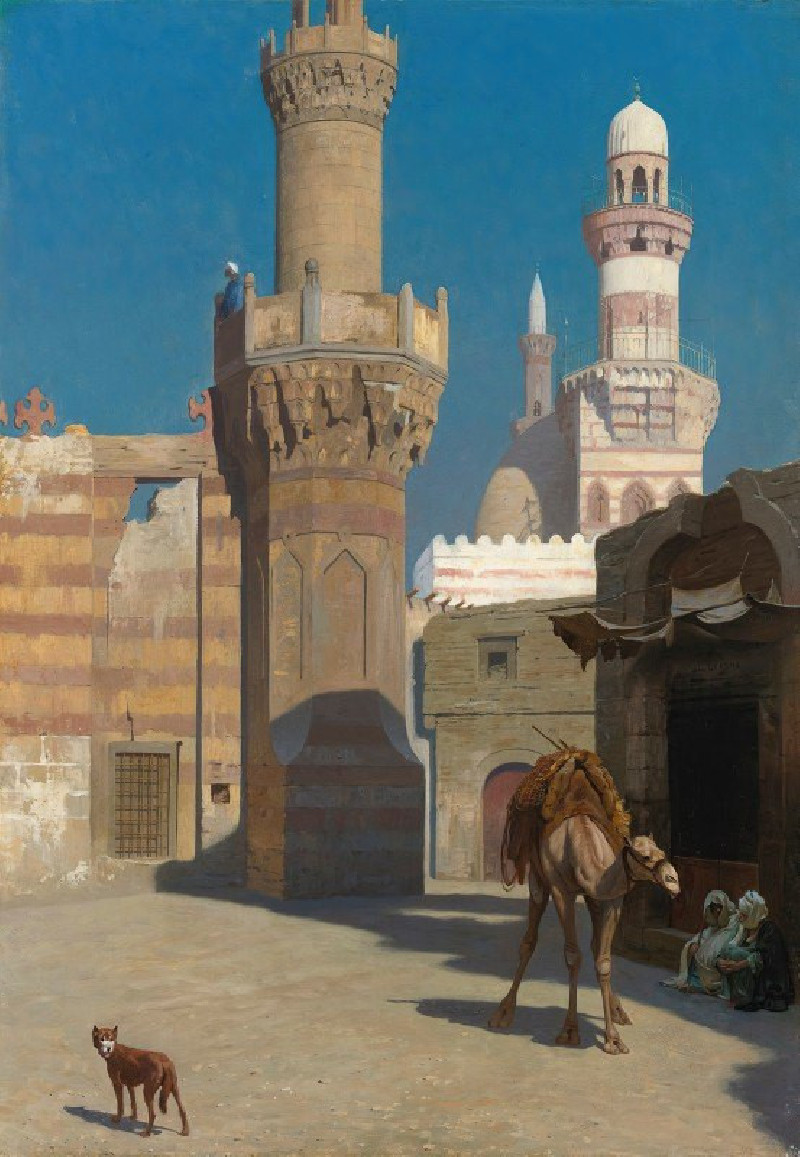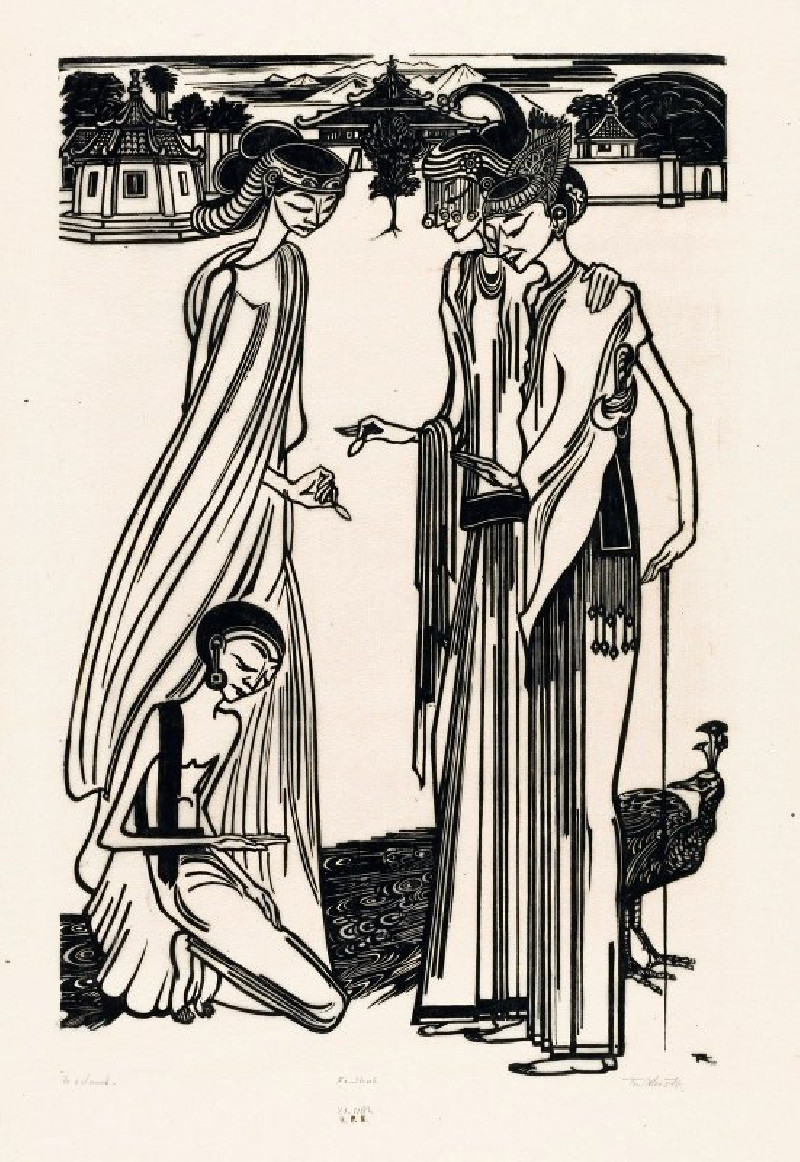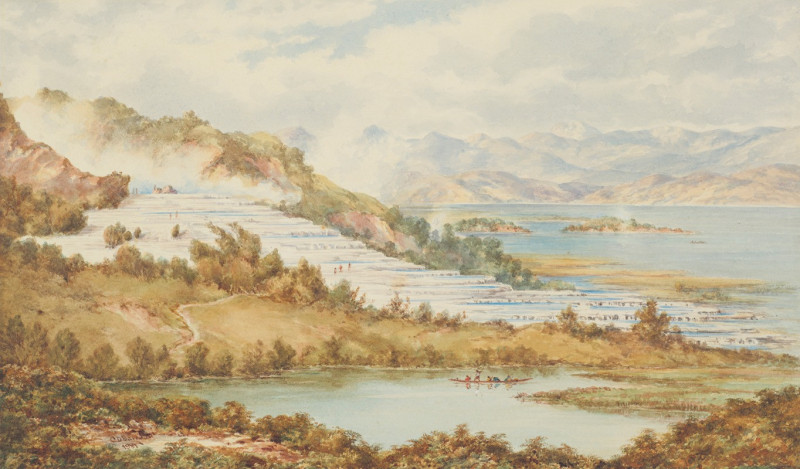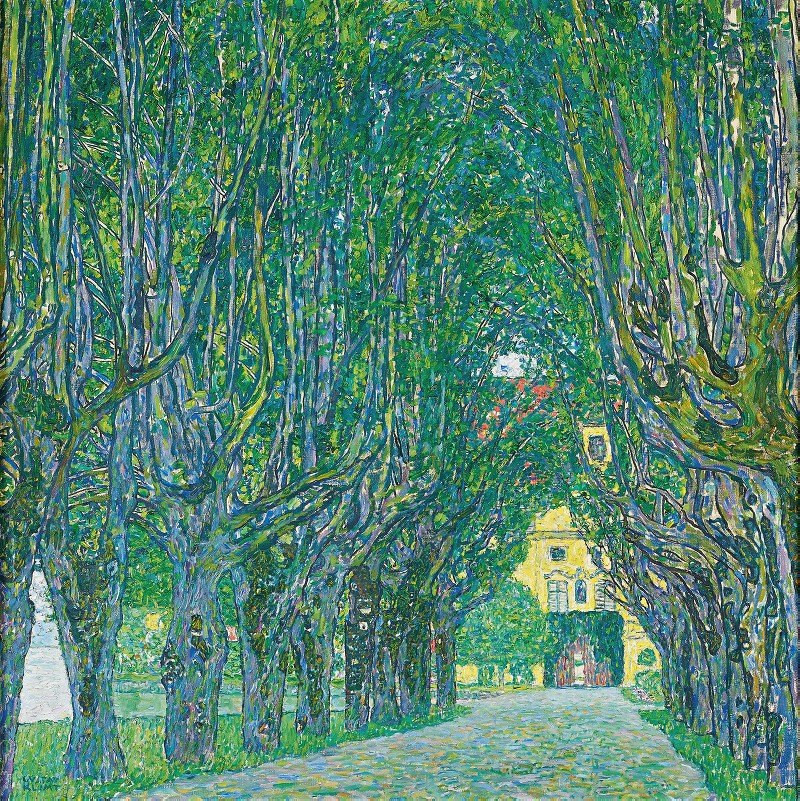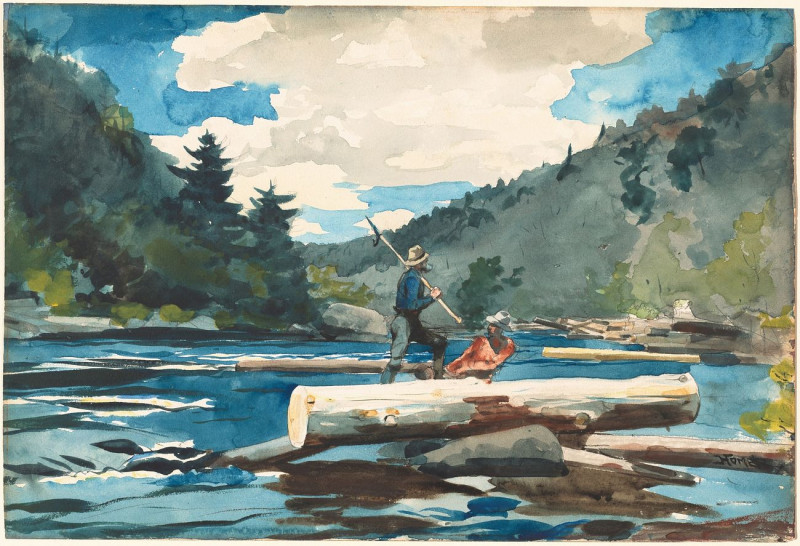Saint-Mammès, Le Matin (1881)
Technique: Giclée quality print
Recommended by our customers
More about this artwork
Alfred Sisley's tranquil rendering "Saint-Mammès, Le Matin" captures the serene charm of the French riverside at dawn in 1881. Employing his masterful Impressionist techniques, Sisley depicts the gentle flow of life along the banks of a river, possibly the Loing, where he spent many years painting its landscapes.The artwork is characterized by a light, airy palette dominated by blues, whites, and earthy tones, which deftly illustrates the early morning light casting over the small village and reflecting off the surface of the water. Delicate brushstrokes create a flurry of colors in the sprawling wildflowers in the foreground, leading the viewer's eye towards the distant boats and houses lining the far bank.The scene is peaceful and everyday: boats gently bob in the calm water as the village begins to stir under the waking sky, suggesting the beginning of daily activities. Slightly left of center, the river leads into the heart of the village, inviting one to ponder the tranquil rhythms of riverside life. In the distance, a series of houses and buildings lining the riverbanks are portrayed with just enough detail to evoke a lived-in community, yet retain the dreamy quality signature to Impressionism."Saint-Mammès, Le Matin" reflects Sisley's ability to capture the fleeting effects of light on the landscape and his profound connection to the rural locales around Paris.
Delivery
Returns
Alfred Sisley (1839–1899), an English impressionist artist, was renowned for his breathtaking impressionist landscape paintings. Born in 1839 to a wealthy family in Paris, Sisley spent most of his life in France. Despite being intended for a career in commerce, he rebelled and pursued his passion for painting as an amateur in the studio of Charles Gleyre, where he befriended artists Claude Monet and Pierre-Auguste Renoir. The financial loss of his family in the Franco-German War led Sisley to make a career out of his art, though it left him financially distressed. It wasn't until after his passing in 1899 that the true value of his work was recognized.

